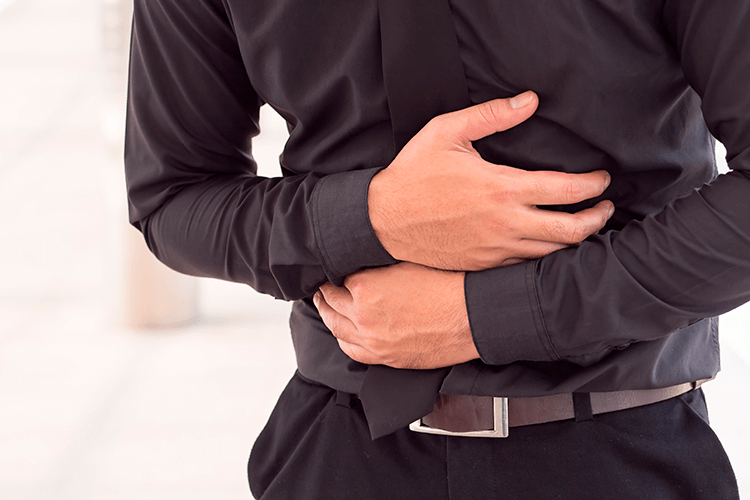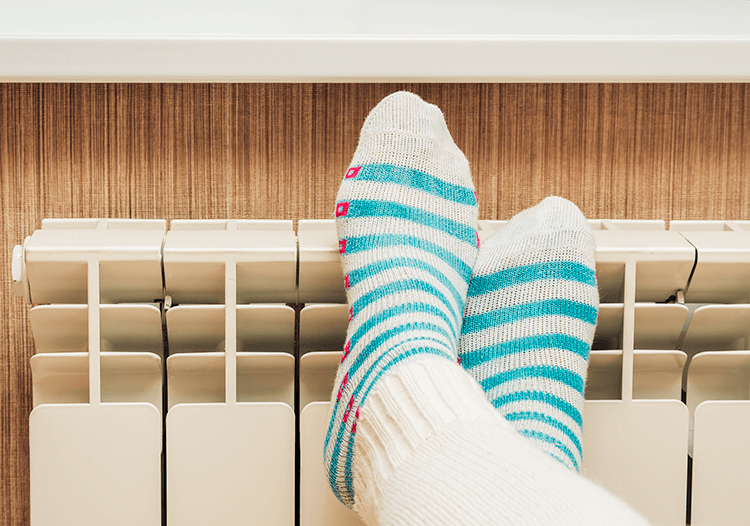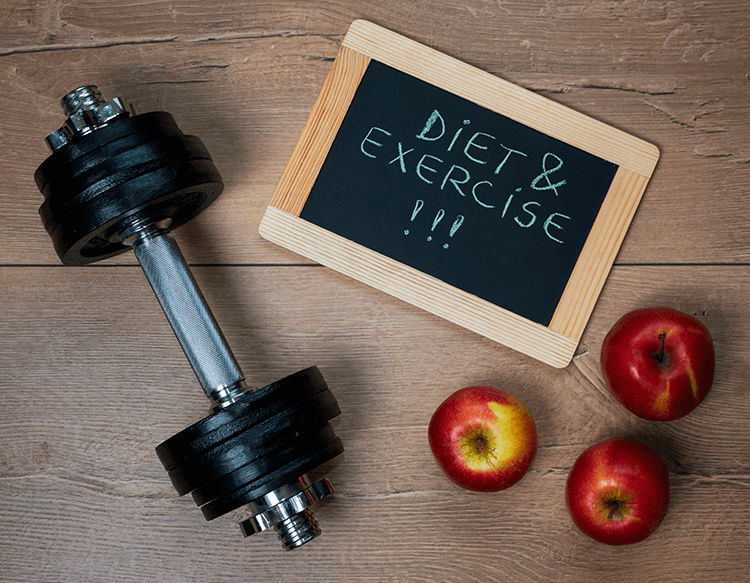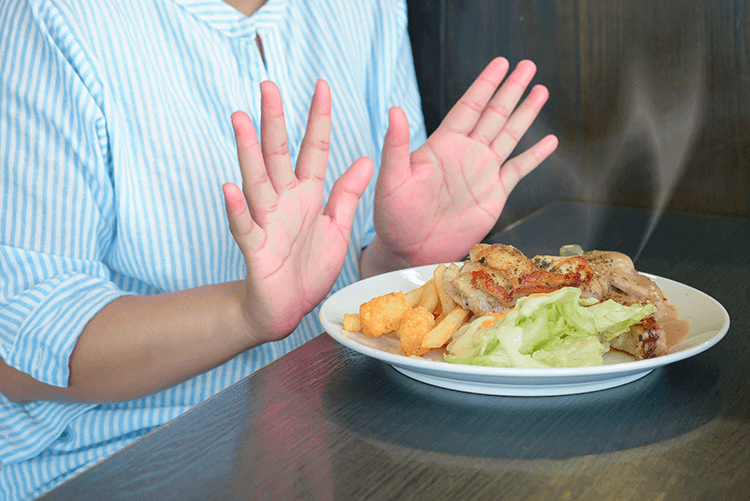We all tend to sweep certain nagging symptoms under the rug in an effort to just get through the day. After all, aches and pains are part of life.
But when the minor issues stack up in a certain way, they point to a greater problem that presents a major risk to your life!
Have your friends complained lately that you’re too tired to hang out with them, or too spaced out to really engage? Chronic high blood glucose could be the problem.
Stick with us for our entire list of symptoms related to this dangerous condition, and finally, how to fix it.
Click next under the picture to continue reading.

Advertisements

Advertisements
1. Fatigue

When fatigue is triggered by high blood glucose, it’s because your body is not storing or using glucose properly. Cells don’t get the fuel they need and so you may feel totally sapped of energy.
But if you follow your instinct to grab a high-carb snack for that quick energy boost, your blood glucose will rise even more and only add to the problem.
2. Headaches

Chronic high blood glucose tends to damage nerves all over the body. When that damage occurs to the optic, cranial, or peripheral nerves or nerve roots, frequent headaches can result.
It’s true that there are many other causes for headaches, but any recurring, intense headaches that are out of the ordinary for you should be checked out by a doctor.
3. Difficulty concentrating

Your brain really needs glucose to work. Though it makes up only 2% of total body weight, it actually uses 25% of consumed glucose. But when there is too much glucose in your system, the body triggers a process to flush it out.
Then brain cells are actually denied vital fuel, and you’ll struggle to think clearly, remember things, and stay on task.
4. Dry and itchy skin

Chronic high blood glucose causes dehydration, which in turn affects all parts of the body, including skin. Poor blood circulation is another side effect of high blood sugar that can contribute to dry, itchy skin, especially on the feet and lower legs.
Finally, associated nerve damage has the potential to interfere with your sweat glands and contribute to overall dry skin.
5. Diarrhea or constipation

It may seem strange that one condition can cause both diarrhea and constipation, but it’s because the large and small intestine actually function quite differently. The small intestine absorbs nutrients from digested food, while the large intestine absorbs water from indigestible waste.
So when nerve damage from high blood glucose affects the small intestine, material is delayed there, leading to yucky gas, bloating, and diarrhea. On the other hand, stuff that lingers in the large intestine too long becomes dry and difficult to pass.
6. Slow healing cuts or sores

When you have chronic high blood glucose, the body’s chemical control system that directs healing is disrupted. Plus, nerve damage affects the amount of oxygen the area can get and oxygen is critical to healing.
If you have any cuts or sores that just aren’t healing even though you’ve resisted the urge to pick or scratch at them, get to a doctor ASAP.
7. Cold or numb feet

Your body has a bunch of different defense mechanisms to combat high blood glucose, but they can cause collateral damage. One typical issue is poor circulation due to blood vessels that have narrowed and hardened.
You’ll typically feel coldness due to poor circulation in the extremities more than other places. Numbness in the extremities is caused by nerve damage, also due to insufficient blood supply over time.
8. Excessive urination

If you suddenly find yourself running to the bathroom all day long, you may have a condition called polyuria. This happens when cells pump water into the bloodstream in an effort to flush out excess sugar. Meanwhile, the kidneys become overwhelmed and unable to filter the water back into cells.
Really excessive blood glucose can trigger the loss of up to 4 gallons of fluid per day, seriously dehydrating the body, not to mention taking up all your free time!
9. Weight loss

High blood glucose can cause weight loss even as appetite and food consumption spikes. Sounds good, right? Unfortunately, it’s actually quite dangerous. There are a couple of reasons for this phenomenon. First is simply that frequent urination (caused by the polyuria) reduces water weight.
This high volume of urine is also loaded with wasted calories. Second, if your insulin levels are too low to metabolize the glucose in your system, the body burns fat instead of available fuel. You will starve no matter how much you eat.
10. Blurred vision

Blurred vision is another symptom of the overall dehydration that occurs with high blood glucose, because the body pulls fluid out of all cells, including the eyes. When the lens becomes dehydrated, it temporarily warps, causing blurriness.
Chronic high blood glucose can also lead to a condition called retinopathy, or damage to the back of the eye. Retinopathy, left unchecked, can result in blindness.
11. Irritability

There are many theories for why high blood glucose negatively affects mood, but the fact that it does has been well documented. Some suspect that fluctuations in the amount of glucose available to the brain is at the root of the issue, while others point more towards poor nerve conduction velocity in the brain.
Speculation aside, it stands to reason that the combined symptoms of high blood glucose – frequent urination, itchy skin, blurred vision, cold feet, slow healing sores, etc. – are simply annoying enough to put anyone in a bad mood.
Conclusion

Chronic high blood glucose is a problem that can lead to a host of complications, including diabetes. But don’t panic. It is a problem than can be remedied by diet and exercise.
Talk to your doctor if you’re experiencing any combination of these symptoms. A simple blood test can give you the information you need to feel better and live your best life. Get it done now; your friends miss you!
Continue To Next Slide for more information that will help you stay healthy and positive
Cancer is one of the most deadliest and scariest diseases. Diagnosis is always a huge shock.
Yet, many cancers are highly curable when caught early. That’s why it’s very important to be on constant alert for cancer symptoms.
Here are the 11 cancer symptoms you should NOT ignore.
Pay special attention to the last one, since it can easily be misinterpreted.
Click next under the picture to continue reading.


1. Persistent fatigue

Persistent fatigue can be an important symptom of leukemia and colon or stomach cancers. It may manifest itself differently from everyday fatigue.
Cancer-related fatigue often doesn’t go away after a good sleep and lasts longer. Sometimes it is caused by blood loss that’s not obvious.
2. Unexplained weight loss

Most people with cancer are likely to lose weight at some point. If you don’t recall any specific reason, like exercising more, or changing diet, a rapid unexplained weight loss can be a dangerous sign.
An unexpected weight loss of 10 pounds or more may be one of the first signs of cancer and can be used to catch it early.
3. Unexplained thickening or lump

Examine your body regularly. A lump, or thickening may be an early or late sign of cancer and should immediately be reported to a doctor.
Pay extra attention to new lumps or thickening or those that are changing in size. Don’t stress over it too early though. Many of those changes in your body can be completely benign.
4. Constant pain

Although pain can be a symptom of a huge variety of diseases, it can also indicate cancer. If the pain is unexplained and doesn’t go away or get better with treatment, it’s a warning sign.
Depending on where the pain is localized, it can be a symptom of a brain tumor, cancer of colon, rectum or ovary.
5. Frequent fever

Almost all people with cancer are likely to have fever at some stage, especially if cancer affects the immune system.
Although fever is more common at late stages, it can also be an early sign of blood cancers, such as leukemia or lymphoma. In any case, if you often experience fever, especially you cannot understand a reason, best to seek medical attention.
6. Skin changes

Skin cancer is considered to be the most common type of cancer and sometimes it can be difficult to recognize it in the early stages.
Anytime you have a freckle, wart, or mole that changes color, size, or shape, or if it loses its sharp border, then you should have it checked out for melanoma or some of the other types of skin cancer. However, besides skin cancers, other cancers can also cause skin changes. Pay attention to signs and symptoms which include: darker, yellowish or reddened skin, itching, bleeding, etc.
7. Change in bowel or bladder habits

If you experience long-term constipation, diarrhea or a change in the size of the stool, it may be a good idea to visit a doctor.
These are signs of colon cancer. Symptoms of bladder or prostate cancer include pain when passing urine, blood in the urine or a change in bladder function. Report these types of unusual signs to a doctor, however, keep in mind these could also be a signal of a urinary tract infection.
8. Nagging cough or hoarseness

A cough every once in a while isn’t usually anything to worry about. However, a persistent cough that doesn’t go away is a cause for concern.
Most coughs aren’t cancer, but it should still be evaluated by your doctor. Pay extra attention if cough causes pain in your chest, shoulder or back area.
9. Unusual Bleeding

Unusual bleeding is always something worth investigating, even if it’s not a sign of a cancer. However it can also happen in early or advanced cancer.
Coughing up blood, blood in the stool or urine, abnormal vaginal bleeding are all dangerous signs.
10. Indigestion or trouble swallowing
Advertisements

Indigestion issues that don’t go away could be symptoms of cancer. Potential causes are cancers of esophagus, stomach, or throat.
However, in vast majority of cases, indigestion or swallowing problems indicate something other than cancer.
11. Other Symptoms

These signs and symptoms we just reviewed are the more common ones, appearing in cancer patients. However, there’s a huge variety of other possible symptoms.
Swollen feet, for example, are not necessarily a symptom of cancer, but rather side effects from cancer treatments, but if you are experiencing unexplained swollen feet, best to consult with your doctor.
Overall, if you notice any major changes in how your body looks and feels, especially if the condition doesn’t go away for a long time – talk to your doctor.
Again, spotting cancer early can significantly increase your chances.
Click Next to learn what cancer causing food you might be eating every day.
You are likely aware that eating junk food is a major risk factor for cancer. But did you know that some so-called health foods are actually carcinogens in disguise?
Or that certain ingredients found in virtually all packaged foods present a serious health risk?
By being an informed consumer, we can help influence for good the types of products that end up on our grocery shelves, and enjoy better health to boot.
Read on to discover 17 very common foods known to increase cancer risk, along with some healthier alternatives.
Click next under the picture to continue reading.


1. Soda

Not only is soda jampacked with sugar – cancer’s fuel of choice – but it often also contains caramel color. This artificial coloring has the carcinogenic chemical 4-MEI as a byproduct. Laboratory tests show that 4-MEI shows up in sodas with caramel color.
Alternatives – Water is always best, but if you really crave the sweet, bubbly hit of soda, choose a natural brand without caramel color.
2. Grilled red meat

While a nice char on that steak may taste good, the high temperatures used for its cooking produce cancer-causing hydrocarbons. And excessive consumption of red meat in general is thought to up your cancer risk.
Alternatives – Eat red meat sparingly, cook it carefully, and choose organic, grass fed beef if possible.
3. Microwave popcorn

There’s a triple whammy here – the butter flavoring used in many microwave popcorn brands releases diacetyl, a known toxin, when cooked. Next, the perfluorooctanoic acid that lines the bags themselves is carcinogenic. And finally, popcorn producers are not required to report whether or not their kernels are GMO.
Alternatives – Buy organic kernels and pop them in an air popper or on your stove.
4. Canned food, especially tomatoes

Canned foods are dangerous because the cans are lined with the chemical BPA, a known hormone disrupter. Canned tomatoes are especially problematic because their acidity causes the BPA to leach into the food. Tomatoes in general are very healthy; it’s the packaging that’s the problem here.
Alternatives – Eat fresh or frozen produce.
5. Hydrogenated oils

Vegetable oils are not extracted from their source naturally, but instead must undergo a chemical process. Later, even more chemicals are added to achieve the desired look and consistency of the product, resulting in an extremely high level of unhealthy omega-6 fats.
Alternatives – Choose olive, soy, or canola oil instead; these oils are naturally extracted.
6. Farmed salmon

Though wild-caught salmon is one of the healthiest proteins you can eat, the farmed version is fed an unnatural diet full of chemicals, pesticides, and antibiotics. They are also fattier than wild-caught, and therefore store more of the bad stuff in their bodies.
Alternatives – Eat wild-caught salmon or augment your diet with a purified fish oil supplement.
7. Artificial sweeteners

Most artificial sweeteners are produced by a chemical process, and there isn’t enough data to really deem them safe. Some studies suggest that artificial sweeteners cause the toxin DKP to build up in the body and potentially cause brain tumors.
Alternatives – If you must use sweetener, choose plant-based Stevia. Certain recipes can also substitute applesauce for sweetener.
8. Refined white flour

The refining process strips away all nutritional value from the original wheat. Even worse, the flour is then bleached with chlorine gas to achieve that appealing white color. White flour is a carbohydrate that breaks down into simple sugar, cancer’s preferred fuel.
Alternatives – Choose unbleached, whole wheat flour for your cooking, and read labels carefully to determine how much of the white stuff is in packaged products.
9. Non-organic fruits & vegetables

The fruits and veggies themselves are extremely healthy, but the pesticides sprayed on them are anything but. Altrazine, for example, is a weed-killer that has been banned in Europe for causing severe problems in humans, but is still commonly used in the U.S.
Alternatives – Buy organic as much as you can, and carefully wash all produce before eating.
10. Processed meat

This includes things like bacon, hot dogs, sausage, and deli meats. The processing often adds huge amounts of salt as well as dangerous chemicals, especially nitrate and nitrite. The additives are intended to make the food look nicer and last longer, but carry a steep risk to your health.
Alternatives – Eat mostly fresh, organic meats and look for other products with minimal processing and no preservatives.
11. Potato chips

Potato chips are offenders for several reasons. One, they are fried in trans fats, and two, they are loaded with salt. Many varieties also have preservatives and artificial coloring.
Alternatives – Pretzels, air popped popcorn, dried apple or banana chips.
12. GMO foods

There is fierce debate about the safety of GMO foods. Huge food producers like GMO products because they have been modified to better resist pests, be easier to transport, and last longer. However, very little safety testing was done before the foods hit shelves, and we have no idea of their long-term health effects.
Alternatives – Organic produce and meats; packaged foods with a Non-GMO label.
13. Alcohol

Studies by the National Cancer Institute have shown a link between alcohol consumption and cancers of the head and neck, esophagus, liver, breast, and colon.
Alternatives – If you are not ready to quit entirely, keep your alcohol consumption in the low risk category – no more than 3 drinks in a sitting for women and 4 drinks in a sitting for men, with no more than 7 drinks total per week for women and 14 total per week for men.
14. Refined sugars

The worst offender in this category is high fructose corn syrup, and it’s in a ton of processed foods and drinks. For example, you’ll find 15 teaspoons of the stuff in one 20 oz soda! As we know, cancer loves to feed on sugar.
Alternatives – Always scan the ingredients list when buying packaged food; the sugar content will surprise you. Satisfy your sweet tooth with whole fruit rather than candy.
15. Margarine

Margarine was supposed to be a healthier alternative to butter, but as it turns out, margarine is made from hydrogenated vegetable oils and is full of trans fats. Recent studies have suggested that trans fats are way more dangerous than the saturated fats found in butter.
Alternatives – Still go easy on the butter, but choose it over margarine. Olive oil flavored with herbs is also a nice topping for bread or veggies.
16. Diet foods

This one’s a real kick in the teeth – you think you’re making a smart choice by purchasing “diet” foods, but in reality these products are often jammed with extra sugar or artificial sweeteners to replace any fat that’s removed. They may also contain various chemicals designed to get you hooked and coming back for more.
Alternatives – Eat fresh, whole foods rather than packaged diet meals.
17. French fries

French fries taste so good, but being fried in trans fats and then heavily salted makes them a real cancer risk. Foods heated to such a high temperature also produce acrylamide, a known carcinogen found in cigarette smoke.
Alternatives – Check out some recipes for baked fries; using flavorful spices and olive oil produces a very tasty and much healthier side dish.
Conclusion

It’s easy to be overwhelmed by information on the good and the bad in food choices.
But luckily it can all be boiled down into some simple guidelines. Simply shifting your mealtime balance towards whole foods (away from packaged products) and skipping the sodas will make a huge difference in cancer risk.
Life is very busy, but kitchen time can be quality time for the entire family.
Click Next to learn about 11 important cancer symptoms you’re probably ignoring
Cancer is one of the most deadliest and scariest diseases. Diagnosis is always a huge shock.
Yet, many cancers are highly curable when caught early. That’s why it’s very important to be on constant alert for cancer symptoms.
Here are the 11 cancer symptoms you should NOT ignore.
Pay special attention to the last one, since it can easily be misinterpreted.
Click next under the picture to continue reading.

Advertisements






Comments